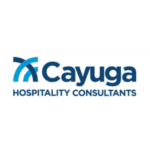
The restaurant business is a juggling act: exciting, social, you learn new things constantly, and you get instant gratification daily. Proper planning in the pre-opening phase can ensure long-term success.
Use these guidelines to create an outline, as seen in this restaurant opening checklist: Pre-Opening-Checklist.
Research: conduct thorough market research
You can get information from the D.O.T, Land and Planning Commission, the U.S. Census Bureau, Water, Electric and Gas Companies, Small Business Bureau, and your local governing body.
First research on the internet, then call each of them or what I did was research and come up with a list of questions like mentioned above, then I visited each local entity to have face time and get answers. The response was amazing compared to a phone call.
Who is your target audience?
What ages do you want to target? What is their professional background? Are they retired? This determines the portion size of your food, because older folks eat less and professionals along with retired people eat out more.
What is the traffic pattern?
Sit on the spot where you plan to open your business for a few hours (a few in the morning, afternoon, and night), count the cars and the people walking by. What is the pattern? Is it busy enough to support your venture?
Who is your competition?
Eat and visit other restaurants in the area you plan to open. Are there any like yours or are you providing a cuisine that is unique to your area? An example: If there are four Hispanic restaurants in the area, then don’t open a Hispanic restaurant. Change your business plan or go to another area which doesn’t have another Hispanic restaurant. You want to pick an area which is underserved and unique so that you create a destination. What is the median income in the area? Understand the income in a 1-mile radius and 5-mile radius, etc. You need to know this to set your price point and the more income means that your customers will dine with you more often).
Financial planning: ensure capital for rent, utilities, payroll, food, and beverage purchases
Many restaurants fail within the first year because they don’t follow a budget and a business plan. If you have a business plan and budget and review with management staff weekly, then your chances of success are greater.
Sample opening budget for restaurant
To estimate your capital needs you will need to go to your landlord (rent), utility companies (avg. cost for the type of business you are opening in your area), come up with a pay scale and find a payroll company to give you an estimated base line payroll and cost out your recipes and cocktails.
For a guideline, check out this sample opening budget for a restaurant: Opening-Budget-Example.
There are a few ways to secure proper capital for your restaurant
- Take an equipment loan out with your bank. (I bought equipment at auctions and then cost it brand new to get the highest loan I could get). The reason is the bank will only loan you a portion of the value of your equipment.
- Take a second mortgage out on your house or other property. (I did this through a Home Equity loan)
- Get an investor or a group of them and sell shares. (I did not want to do this because you are beholding to someone else) However I do know quite a few Restaurateurs that have used this method and have been very successful.
- Go through the S.B.A. (I went through the S.B.A. to buy the 2 acres that my restaurant was sitting on). It’s always wise to own the dirt because you hold your own destiny in your hands. And when you go to sell your
restaurant, you are selling the entire property not just the business. We
made 4 million in sales and only got $350,000. for the business. The 2
acres that we sold with it allowed my wife and I to retire.
Pre-opening preparation: caution not to rush the opening
Staff training
Proper training of both Front of the House and Back of the house which should include all staff meetings. Develop written tests for each to educate your staff on who you are and what your mission is.
Recipe standards
Development of standardized recipes for food and beverages. So that no matter who is making them they will be consistent.
Dry runs with staff only
This is important because your staff will get an education on how you desire to operate the business, builds camaraderie, and they learn how to describe the food. Then at least three friends and family events (they only pay for alcohol not food) Don’t serve the whole menu all three nights; break the menu up and serve the items over the course of the three nights. Have comment cards made up so your guests can critique the service and food. This is invaluable information. You can tweak service and recipes through the feedback of your guests.
Point of Sales system
The P.O.S. companies that I have used are Aloha (which is great) and Upserve. When we switched to Upserve from Aloha it was because Upserve had handheld devices for order taking that made service smoother and the customer could pay the bill right at their table. However, make sure your internet signal is strong in all areas of your restaurant inside and out. We had an issue with that but solved it with a booster. Other companies are Toast, Square and Clover. All companies will help train your staff.
Proper marketing
Even with the best culinary offerings won’t guarantee success if your customer base is not aware or your establishment. Effective marketing is essential for attracting and building a loyal customer base.
To build my brand, I volunteered to cook at events for 5 causes near to my heart. One was Darkness to Light (because we were foster parents and adopted 5 children). The second was Lowcountry Food Bank (which supports no child goes hungry), Charleston Wine and Food, Charleston Farmers Market, and the Childrens Museum.
Use a P.R. firm which is costly, but you need to focus on running the business and they will use social media on all platforms to build your online presence and S.E.O. By hiring a P.R. firm, they can guide you by showing you your online analytics (what’s working and should you change anything. You can also skip the P.R. firm if it’s not really in your budget and post everyday on Social Media platforms such as Facebook, Instagram, and Pinterest.
Hosting charity events is a great way of getting involved with your community and letting people know what you are all about. If you neglect marketing and think that word of mouth will be enough, then your restaurant will struggle to gain traction.
Neglecting your customer feedback
Feedback from your guests is invaluable for restaurant owners wanting to improve and evolve. Listen to them and make small changes so they see you are listening. Then they feel like they are invested in your business and become loyal customers.
Final preparation
Opening a restaurant is an extremely challenging endeavor. But if you plan accordingly, you can increase your chances of success by conducting proper market research, budgeting, getting involved with your community, investing in marketing, prioritizing operational efficiency, and listening to your customer base. You are setting your new business up for success day one. And stay in tune with your industry to stay ahead of the trends, by joining groups like local entrepreneur networking groups, the American Culinary Federation, your local Chamber of Commerce. These organizations will help you become a better leader in your industry.



















